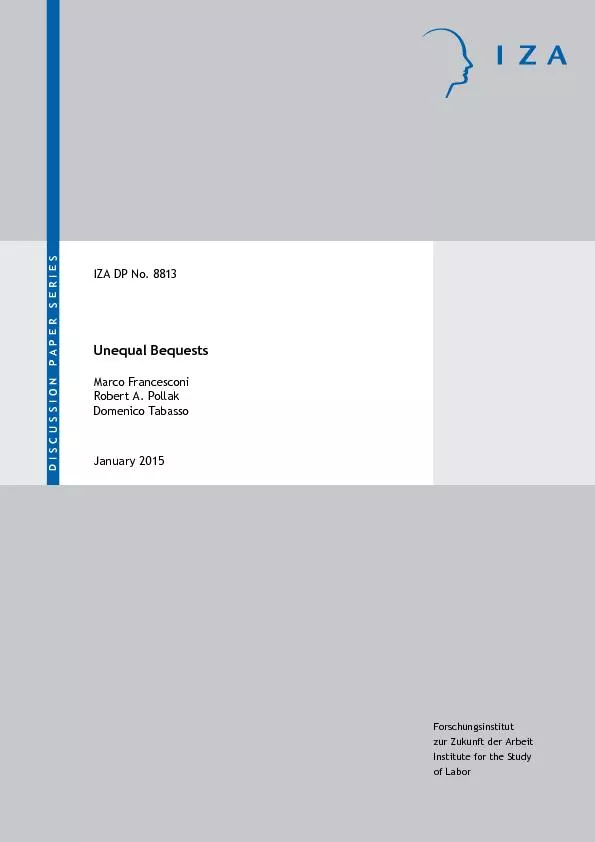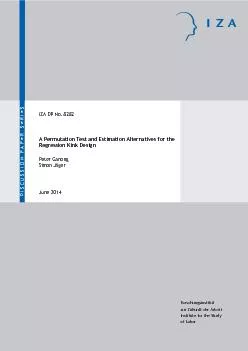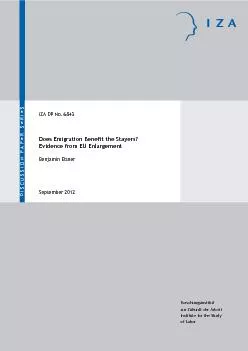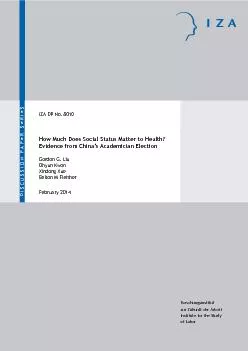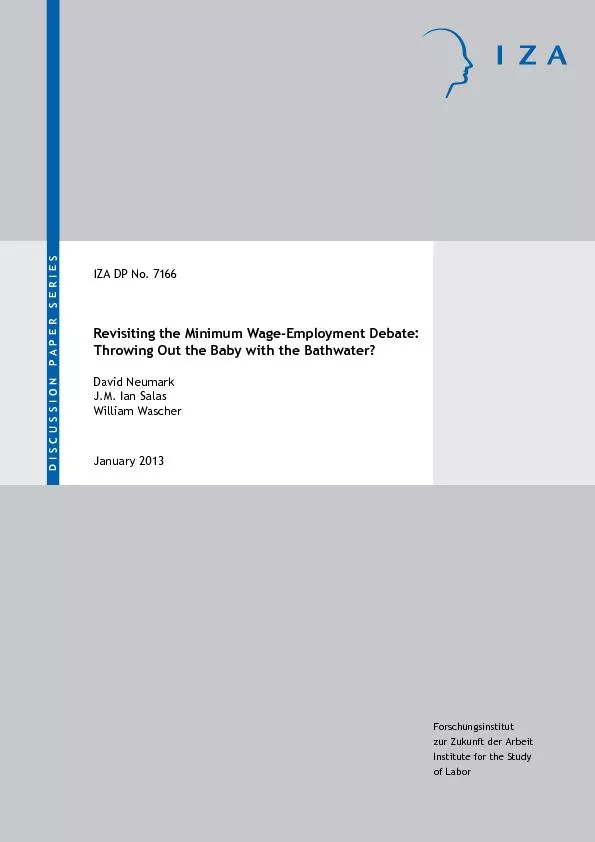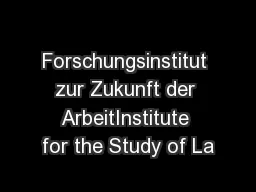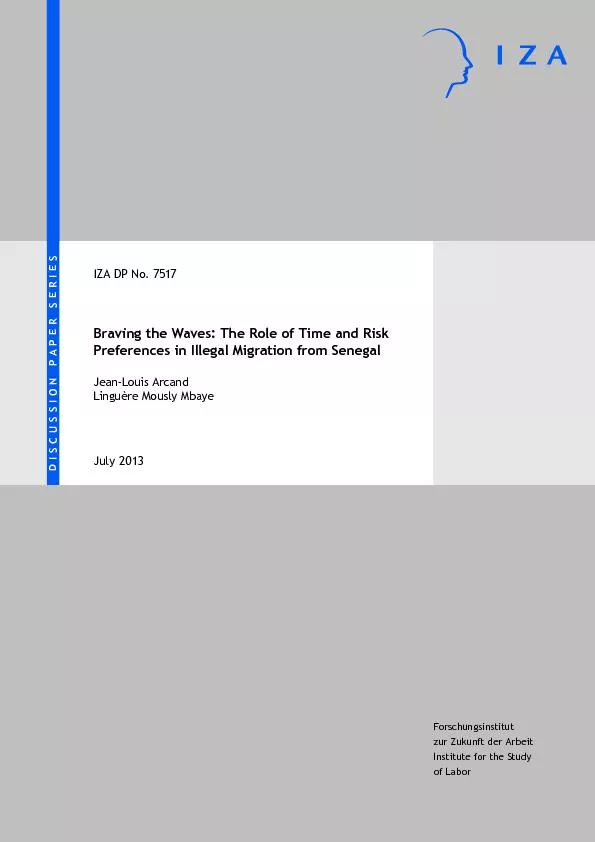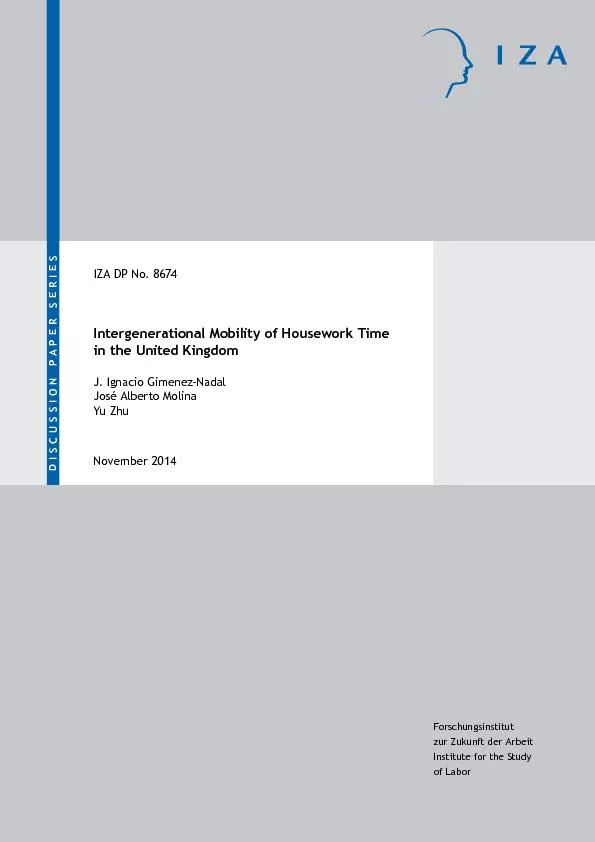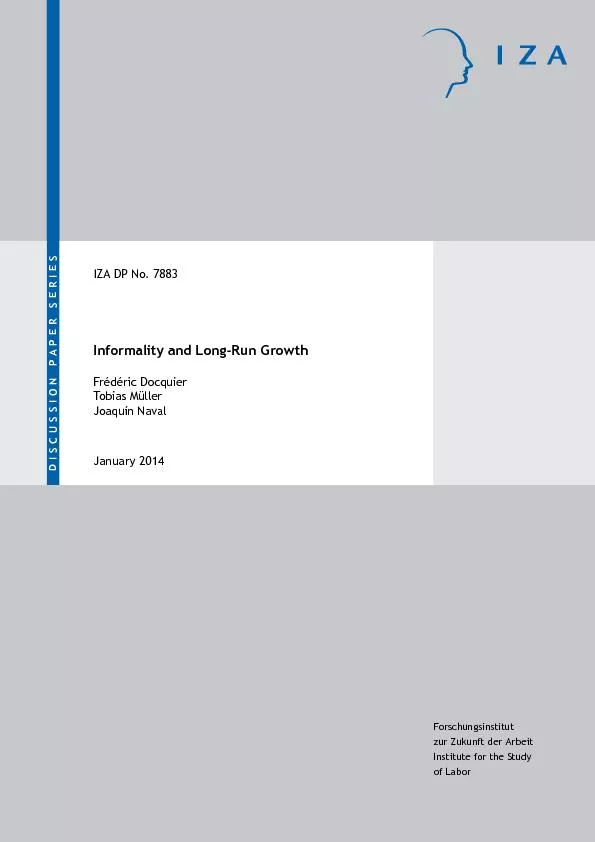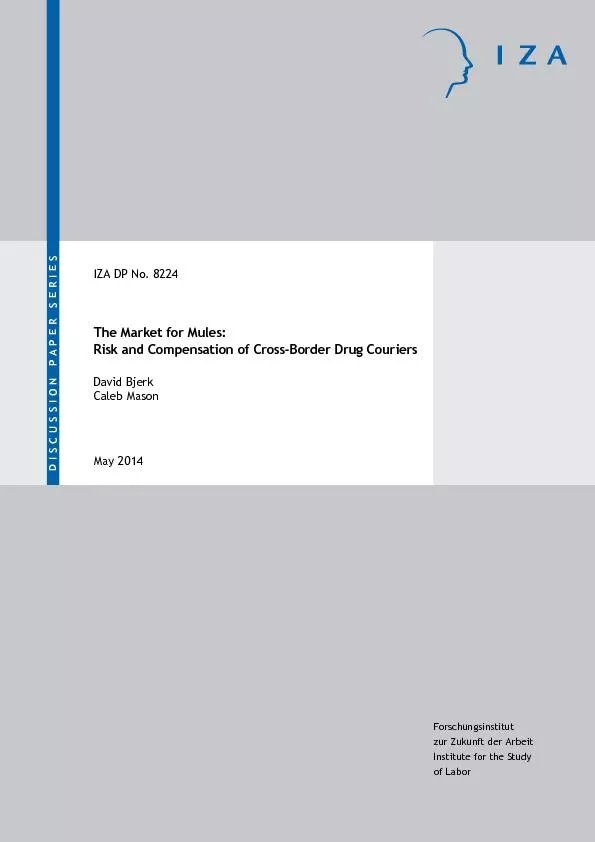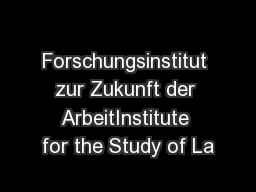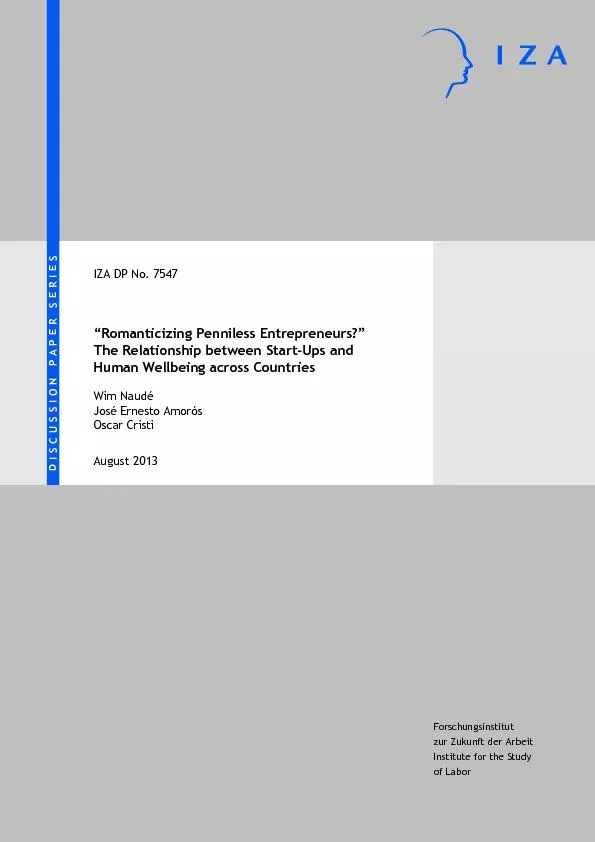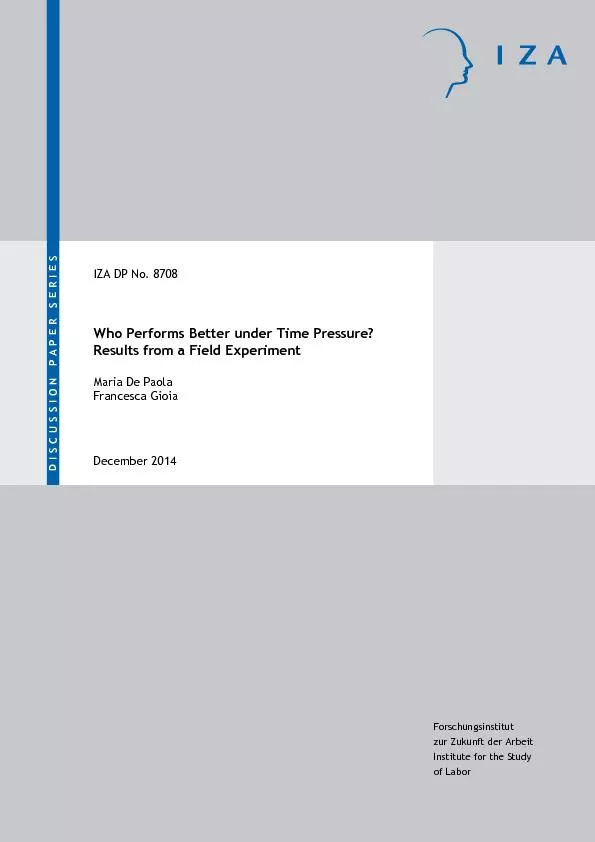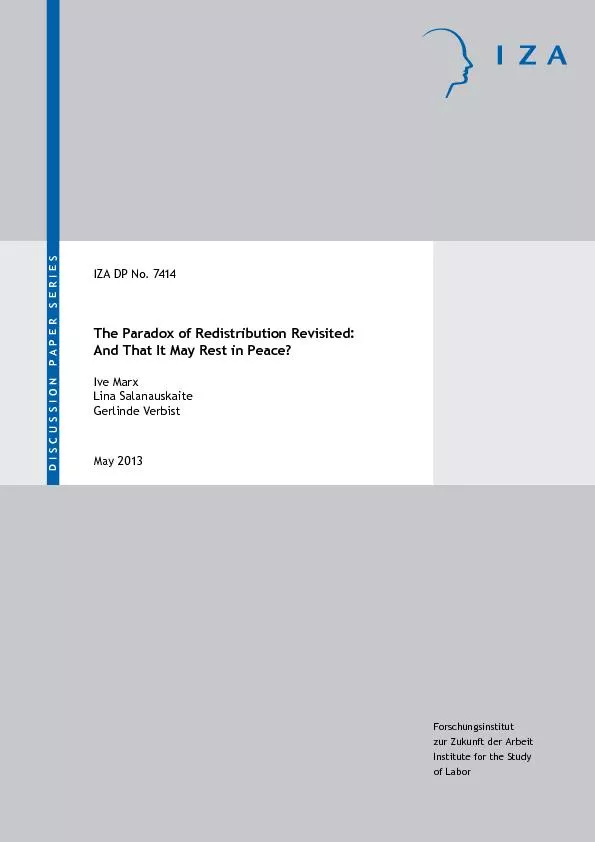PDF-Forschungsinstitut zur Zukunft der ArbeitInstitute for the Study of La
Author : calandra-battersby | Published Date : 2016-10-16
Unequal BequestsIZA DP No 8813Marco FrancesconiRobert A PollakDomenico Tabasso Unequal BequestsMarco FrancesconiUniversity of Essexand IZARobert A PollakWashington
Presentation Embed Code
Download Presentation
Download Presentation The PPT/PDF document "Forschungsinstitut zur Zukunft der Arbei..." is the property of its rightful owner. Permission is granted to download and print the materials on this website for personal, non-commercial use only, and to display it on your personal computer provided you do not modify the materials and that you retain all copyright notices contained in the materials. By downloading content from our website, you accept the terms of this agreement.
Forschungsinstitut zur Zukunft der ArbeitInstitute for the Study of La: Transcript
Download Rules Of Document
"Forschungsinstitut zur Zukunft der ArbeitInstitute for the Study of La"The content belongs to its owner. You may download and print it for personal use, without modification, and keep all copyright notices. By downloading, you agree to these terms.
Related Documents

